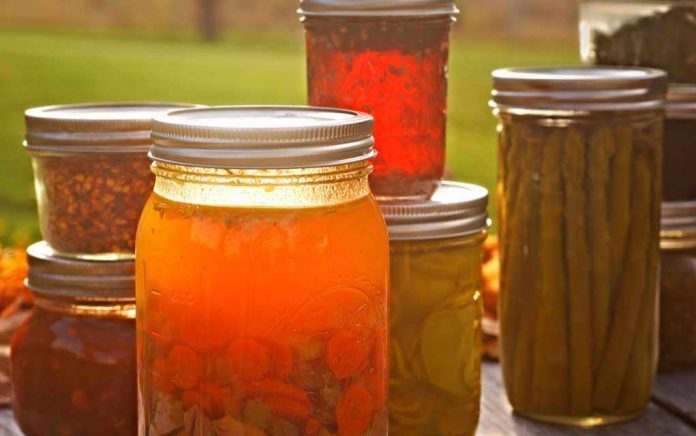Home canning is an excellent way to preserve garden produce and share it with family and friends, but it can be risky—or even deadly—if not done correctly and safely.
What is botulism?
Botulism is a rare but potentially deadly illness caused by a poison most commonly produced by a germ called Clostridium botulinum. The germ is found in soil and can survive, grow, and produce a toxin in certain conditions, such as when food is improperly canned. The toxin can affect your nerves, paralyze you, and even kill you.
You cannot see, smell, or taste botulinum toxin, but taking even a small taste of food containing this toxin can be deadly.
What are the symptoms of botulism?
Botulism is a medical emergency. If you or someone you know has symptoms of foodborne botulism, see your doctor or go to the emergency room immediately.
Symptoms may include the following:
- Double vision
- Blurred vision
- Drooping eyelids
- Slurred speech
- Difficulty swallowing
- A thick-feeling tongue
- Dry mouth
- Muscle weakness
How can I keep myself and others safe when it comes to home-canned foods?
Many cases of foodborne botulism have happened after people ate home-canned, preserved, or fermented foods that were contaminated with toxin. The foods became contaminated because they were not canned (processed) correctly.
You can take steps to protect yourself, your family, and others when it comes to home-canned foods by following these tips:
- Use proper canning techniques.
The best way to prevent foodborne botulism is by carefully following instructions for safe home canning in the USDA Complete Guide to Home Canning. Do not follow recipes and cookbooks that do not follow the steps in the USDA guide, even if you got these items from a trusted friend or family member.
You can learn more about proper home canning from these resources:
- The National Center for Home Food Preservation
- State and county extension services (click on your state or scroll down for a list of all services)
2. Use the right equipment for the kind of foods you are canning.
Pressure canning is the only recommended method for canning low-acid foods. These foods are the most common sources of botulism linked to home-canning. Low-acid foods include almost every vegetable, some fruits, milk, all meats, fish, and seafood.
Always use a properly sized pressure canner that meets USDA recommendations for pressure canning when canning low-acid foods. Contact your state or county extension service to find out if your pressure canner meets USDA recommendations.
Do not use a boiling water canner for low-acid foods because it will not protect against botulism. Do not use an electric, multi-cooker appliance, even if it has a “canning” or “steam canning” button on the front panel. Learn more.
- When in doubt, throw it out!
If there is any doubt whether safe canning guidelines have been followed, do not eat the food. Home-canned and store-bought food might be contaminated with toxin or other harmful germs if:
- the container is leaking, bulging, or swollen;
- the container looks damaged, cracked, or abnormal;
- the container spurts liquid or foam when opened; or
- the food is discolored, moldy, or smells bad.
If the container or the food inside has any signs of contamination, throw it out! If any of the food spills, wipe up the spill using a solution of 1/4 cup bleach for every 2 cups of water.
Never taste food to determine if it is safe. Do not taste or eat food that is discolored, moldy, or smells bad. Do not taste or eat food from cans that are leaking; have bulges or are swollen; or look damaged, cracked, or abnormal. Do not taste or eat food from a can that spurted liquid or foam when it was opened.
Read the full report here.
As published by Foodsafety.org on HealthyExaminer.com














